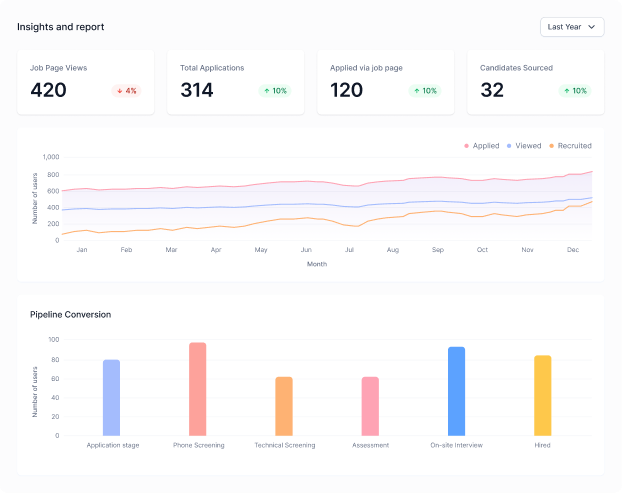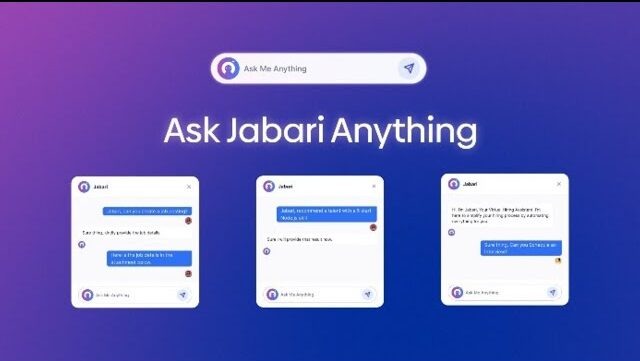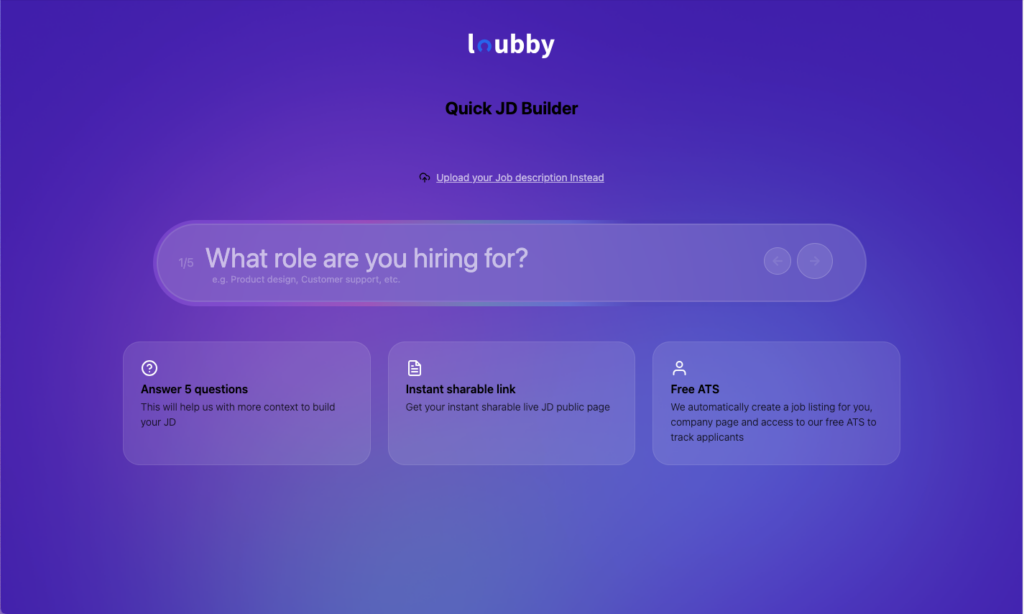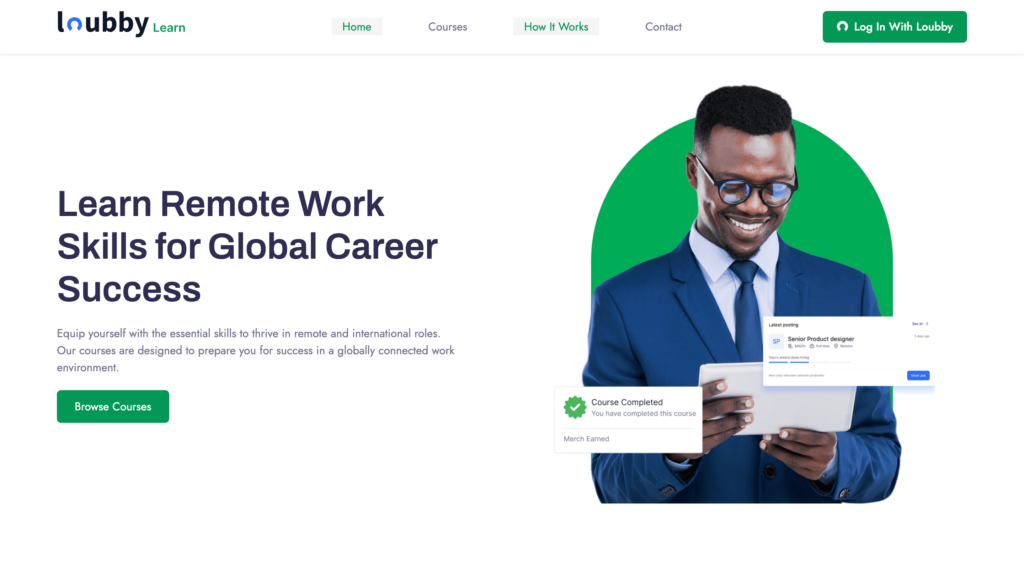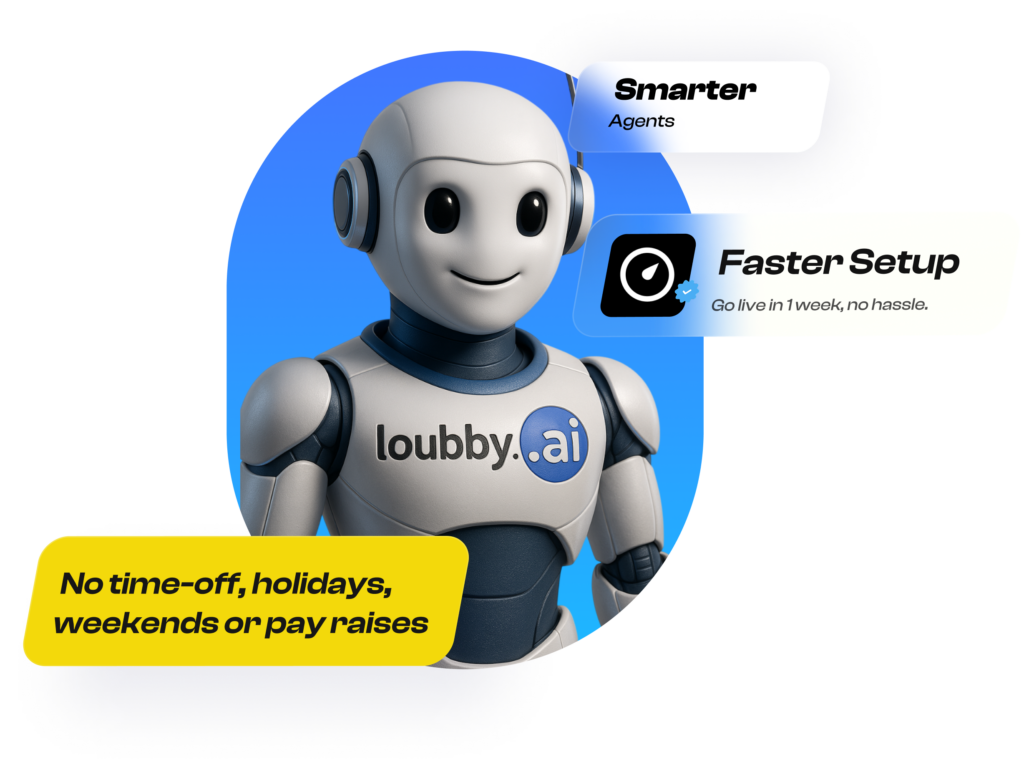There’s a noticeable gap between available jobs and people ready to fill them. As of November 2024, the U.S. Chamber of Commerce reported 7.7 million open positions compared to just 7.1 million unemployed workers. That mismatch is causing serious hiring delays, rising labor costs, and operational strain across industries.
Demand is exceeding supply, and employers are struggling to find candidates who possess not only technical skills but also the ability to adapt, learn quickly, and think critically. The talent competition is fierce, and traditional hiring methods are no longer effective.
To succeed, companies must adopt a strategic approach to recruitment. Relying on outdated practices is not an option. Instead, they should implement flexible, efficient, and intelligent technologies in their hiring processes.
In this blog, we will discuss proven actions that help hiring teams solve real problems. The kind of steps you can take now to close the talent gap, streamline the hiring process, and secure the right people before your competitors do.
What’s Causing Talent Shortage?
Multiple factors are contributing to the growing gap between the demand for skilled workers and the available talent to meet expectations.
1. Rapid Digital Transformation and AI Adoption
More and more companies in various industries are turning to digital tools and automation to keep up with the competition. While this technological shift certainly increases efficiency, it also leads to a greater demand for skilled workers who are familiar with these new technologies. Many roles that didn’t even exist ten years ago are now essential, but unfortunately, not enough people are trained to take them on. With the growing emphasis on AI-driven solutions, there’s an urgent need for professionals who specialize in data science, machine learning, and digital security. Now more than ever, businesses are looking for talent in these crucial areas.
2. Skills Gap vs. Emerging Technologies
A key issue we’re facing today is the gap between the skills that workers currently possess and the skills that employers are actively seeking. As industries embrace increasingly advanced technologies, the demand for specialized knowledge continues to rise. Unfortunately, Many workers simply haven’t been trained in these areas, resulting in a shortage of qualified candidates. What began as a manageable gap has now expanded into a significant barrier for businesses working hard to keep up with innovations
3. Demographic Shifts and Global Workforce Trends
Younger generations entering the job market are increasingly drawn to careers in tech, creative fields, and other areas that may not align with traditional, in-demand professions. Furthermore, the rise of remote work has changed how companies approach hiring. While this trend expands opportunities for job seekers, it also means that companies must compete for talent on a global scale, presenting both challenges and exciting possibilities in recruiting the right candidates for their teams.
4. Key Stats and Trends on Talent Scarcity in 2025
By 2025, 87% of employers will report struggling to find the right candidates. Talent shortages are most noticeable in technology, healthcare, and engineering sectors, where demand has surged significantly. At the same time, 56% of businesses say they can’t find workers with the right skills to match their needs, especially in roles related to digital transformation and data analytics.
Major Hiring Challenges Companies Face Today
Global Competition for Remote-Ready Talent
As remote work becomes the order of the day, companies are no longer looking for talent just within their local areas. Instead, they tend to look for talent from across the globe. With the rise of remote work, highly skilled professionals can live anywhere and still work for companies in different countries. This has opened up a lot of opportunities but also intensified the race for top talent. So, companies must find ways to stand out and appeal to remote workers who have a wider range of options.
Evolving Candidate Expectations
Beyond a competitive salary, candidates are looking for workplaces that align with their personal values. Flexibility, including the option to work remotely, has become what talents wish for. Many candidates are also prioritizing diversity, equity, and inclusion (DEI) practices. Companies that do not offer these benefits might miss out on top talent, as professionals want to feel both valued and supported in their work environments.
Sluggish Recruitment Pipelines & Outdated Processes
Many organizations are still relying on the old ways of hiring. Slow recruitment pipelines, unnecessary steps, and too much paperwork make it harder to hire efficiently. In many cases, outdated processes lead to delays and frustration for both recruiters and candidates. This not only affects a company’s ability to fill positions quickly but also affects its ability to compete for talent. Streamlining the hiring process and making it more candidate-friendly is important for staying ahead.
Mismatch Between Job Roles and Candidate Skills
As businesses continue to evolve, so do the roles within them. However, many companies struggle with matching job descriptions to the skills of potential candidates. A mismatch between what companies need and what candidates can offer has become a common problem. Companies often find themselves either overestimating the skill level required for certain roles or underestimating the skills needed for new, specialized positions. This leaves both employers and candidates frustrated and underprepared for the challenges ahead.
Increased Demand for Tech, AI, and Niche Roles
There’s a growing demand for professionals in technical fields, especially those skilled in artificial intelligence, machine learning, and other technologies. These roles are specialized and require a specific skill set that is in high demand but short supply. As companies integrate more advanced technologies into their operations, the need for employees with this expertise continues to rise. At the same time, other niche roles that were previously overlooked are becoming important to business success, which further complicates the hiring process.
Proven Strategies to Overcome Talent Shortage
1. Embrace Global Talent with Remote-First Hiring
Many opportunities come in when the talent search is extended beyond local boundaries. By adopting a remote-first approach, companies can tap into a broader pool of candidates, no longer limited by geographical constraints. This change allows access to highly skilled professionals from different countries, bringing diversity and innovation to the team. However, to make remote work successful, organizations must invest in a strong onboarding process. This helps distributed teams feel connected, understand company values, and adapt quickly to their roles, regardless of location.
2. Leverage AI-Powered Talent Platforms (like Loubby AI)
Technology can do more than just speed up recruitment. AI tools now help match the right people to the right roles using data, not just guesswork. These platforms can scan large volumes of applications, rank candidates based on skills, and even predict future performance. Automation also takes care of repetitive tasks like resume screening and interview scheduling, which helps recruiters focus more on human interaction and decision-making.
3. Redefine Your Employer Brand
People want to work where they feel their values are reflected. Companies that communicate a clear purpose and show real effort in diversity, equity, and inclusion tend to attract stronger candidates. It’s not just about putting a mission statement on the website. It’s about sharing stories that reflect the culture. Featuring real employee experiences on social media, job boards, and your careers page builds trust and attracts people who care about more than just a paycheck.
4. Upskill and Reskill from Within
Hiring outside talent isn’t the only answer. Sometimes, the people you need are already on your team; all they need is the right training. Investing in current employees helps in building loyalty and fills skill gaps.. Companies that offer opportunities for growth through structured learning paths or in-house training programs see better retention and productivity. Internal mobility also creates room for people to step into new roles without starting from scratch.
5. Speed Up the Hiring Process
Long hiring cycles frustrate candidates and give competitors the chance to grab these talents. Companies need to trim delays wherever possible. This means reviewing the entire hiring process and removing any step that doesn’t add real value. Clear timelines and quick decision-making keep candidates engaged.
6. Build Strategic Talent Communities
The best candidates aren’t always looking for a job. That’s why companies benefit from building long-term relationships with potential hires. By engaging with passive candidates through newsletters, social content, or exclusive events, recruiters stay top of mind. When a role opens up, these candidates already feel connected with the company. This saves time and improves the odds of finding someone who fits well.
7. Offer Flexible, Inclusive Work Models
People want flexibility in how, where, and when they work. Some thrive in remote settings, others prefer hybrid arrangements. Companies that offer options can attract a wider range of talent. But it’s not just about location. Benefits that focus on mental health, personal development, and life outside of work matter just as much. When people feel seen and supported, they’re more likely to stay and grow with the business.
How Loubby AI Helps
Loubby AI makes how companies find, attract, and hire top talent very simple. By combining smart technology with practical tools, it helps employers move faster, reach farther, and make better decisions throughout the hiring process.
Access to Global Talent, All in One Place
Loubby AI gives businesses access to Africa’s talent marketplace. This means employers are no longer limited by location. You can connect with skilled professionals who are ready to contribute. The platform brings these people to you in a structured and organized way, making it easier to identify strong candidates early.
Smarter Matching with AI Support
Rather than relying on guesswork or gut feeling, Loubby AI uses data to support hiring decisions. Its smart matching tools help to compare job requirements with candidate profiles and take out those who don’t meet your needs. The result is saves you time and increases the chances of finding someone who fits the role well.
Simplified Hiring Workflows
Loubby AI simplifies out the steps between first contact and final offer. With everything in one place, from job postings to interview scheduling to communication, teams can move with clarity and purpose. No more jumping between tools or repeating tasks. With Loubby AI the process becomes more predictable, less stressful, and easier to manage.
Support with Vetting and Onboarding
Loubby AI helps with early-stage vetting by providing tools to review portfolios, conduct assessments, and check references. Onboarding tools are also built in, helping new hires get started without confusion or delay. This approach creates a better experience for both employers and new employees.
Conclusion
The talent shortage in 2025 presents real challenges for businesses, from stiff global competition to evolving candidate expectations. However, there are actionable solutions that can help overcome these hurdles. Embracing a global talent pool, leveraging AI-driven platforms, redefining employer brands, and streamlining hiring workflows can all make a significant difference. By adopting these strategies, businesses can stay ahead in a highly competitive talent market.
Let Loubby AI help you with your hiring process. With its AI-powered tools, you can fill your roles faster, smarter, and more efficiently than ever before.
Ready to fill your roles faster and smarter? Book a demo with Loubby AI today.
